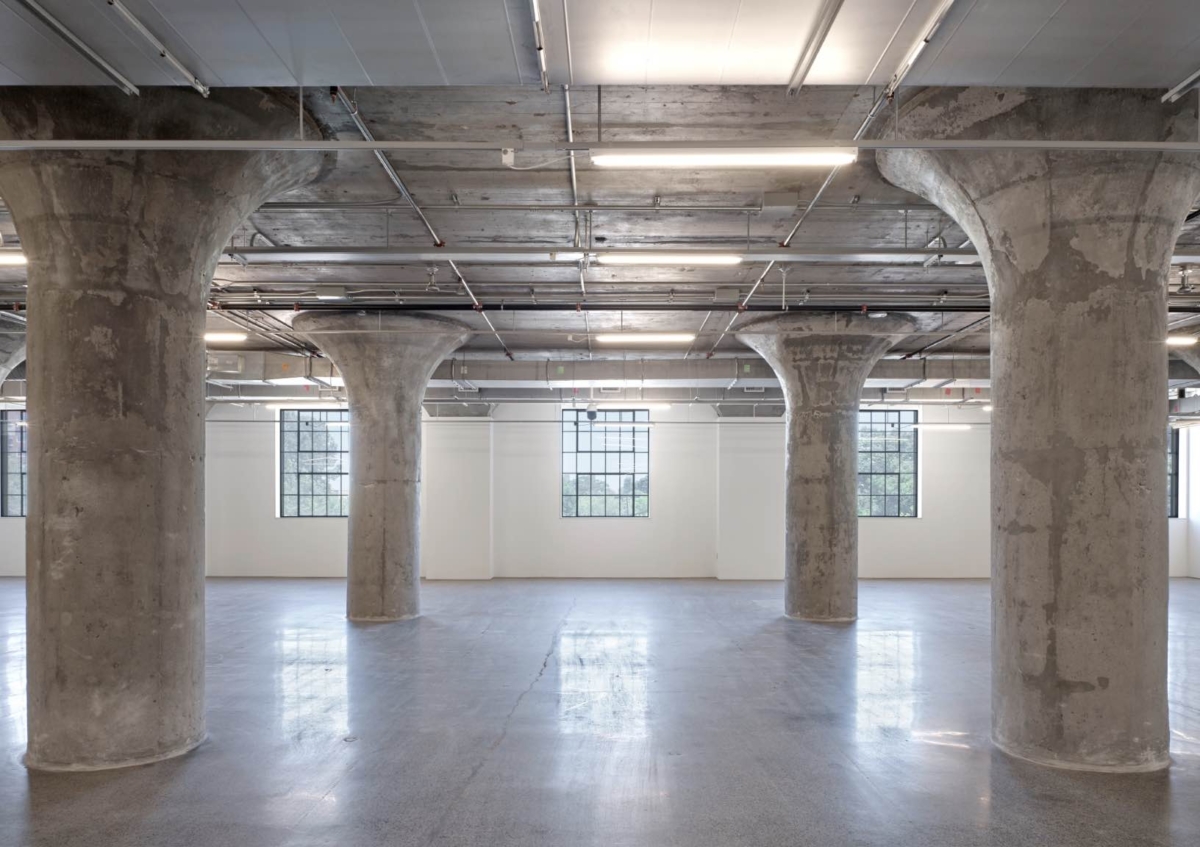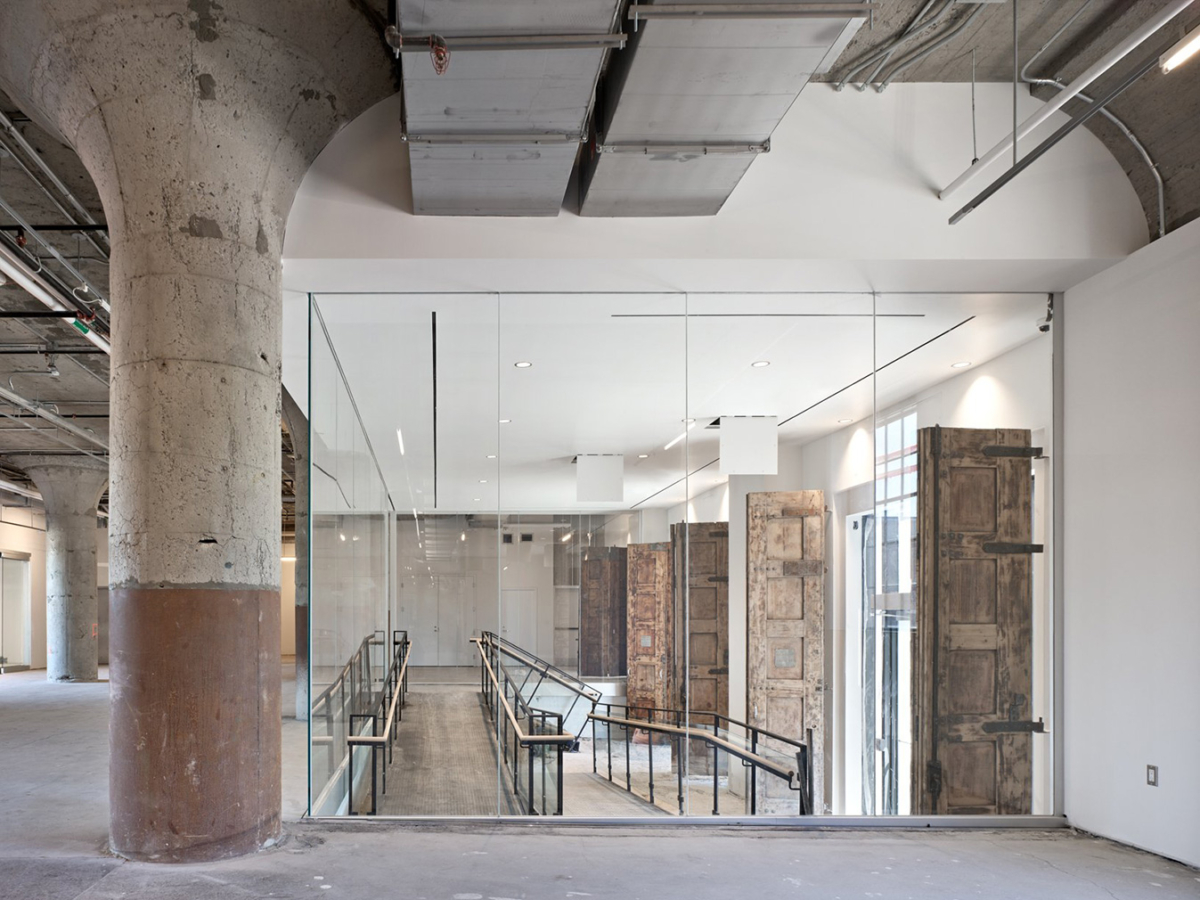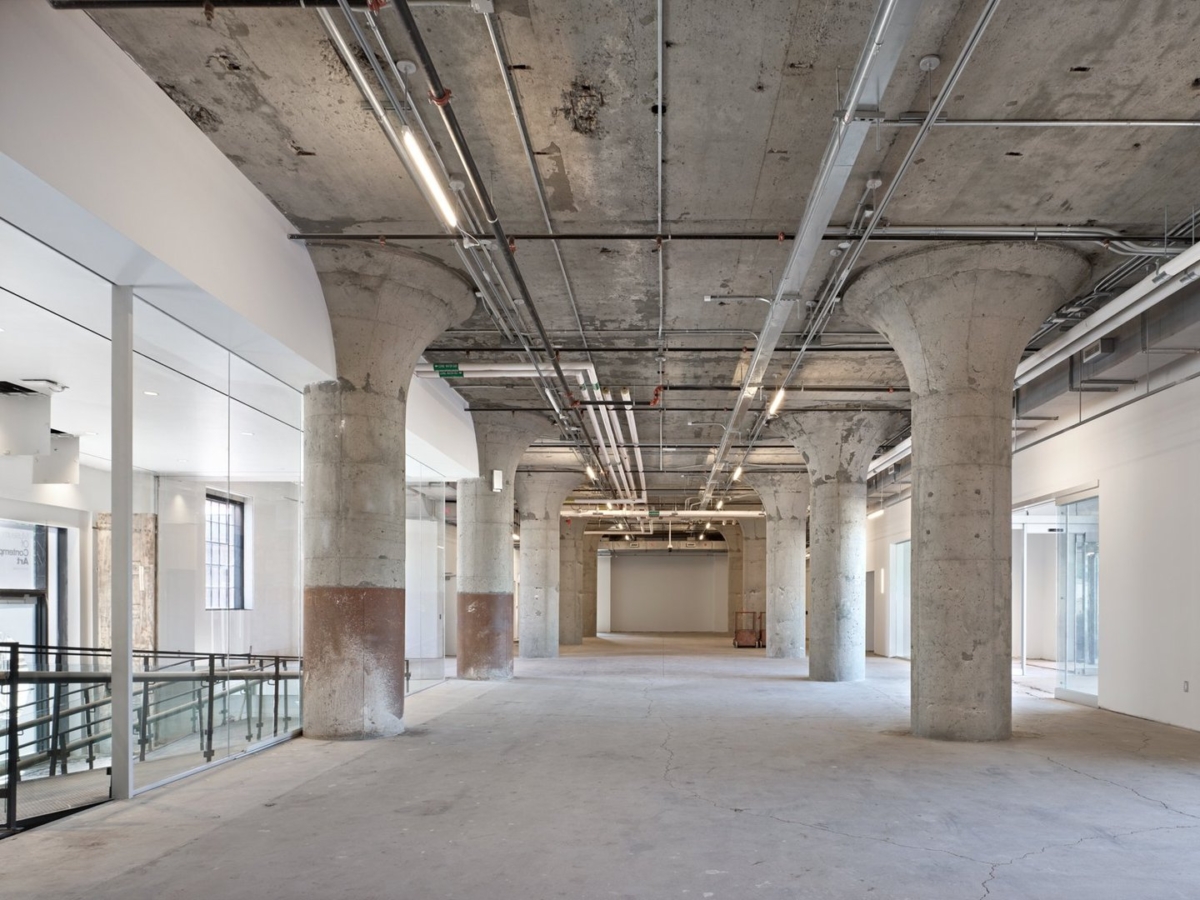
Housed in a former industrial building, Museum of Contemporary Art (MOCA) Toronto Canada is “a destination where that exchange between art, artists, and the visitor happens”.
MOCA occupies the heritage-designated Tower Automotive Building located in the Junction Triangle neighbourhood.

Constructed in 1912, each floor of the 10-storey building is a slab of reinforced concrete supported by concrete columns. Operated as an aluminum factory, sheet-casting facility and automotive parts manufacturer up until its closure in 2006, the building remained vacant until restoration began in 2015 by developer Castlepoint Numa, ERA Architects and architectsAlliance.
On the ground floor, there is a public meeting hall, exhibit space, book store and cafe. The rest of the floors are used as exhibition halls, workshops, administrative offices and libraries. Tower Automotive Building is also occupied by Akin Collective and the Akin Studio Program which offers studio spaces to local artists.

“MOCA needs to be ground breaking…that goes for everything we do,” said MOCA.
“It is part of our DNA and we should always be asking ourselves how we best engage the diverse voices of our audiences — from local residents to international tourists, artists, creators, students, donors, business and industry, media, and government,” added MOCA. “We will be a ‘listening museum’ – a welcoming place that encourages broad access to the practices and thinking of contemporary art.”

“This is stealth architecture,” said Peter Clewes, architectsAlliance’s managing partner and design director. “Our goal was to preserve the rawness of the space as we first encountered it: the honesty of a functional, industrial space, with its patina of history and use cherished and enshrined. The architecture is not the event, but rather it’s the building, so what we have done is simply reveal its bones and present it in an elemental way. If we’re successful here as architects, then you will sense the art, not the architecture.”
To learn more about MOCA, click the link below.





